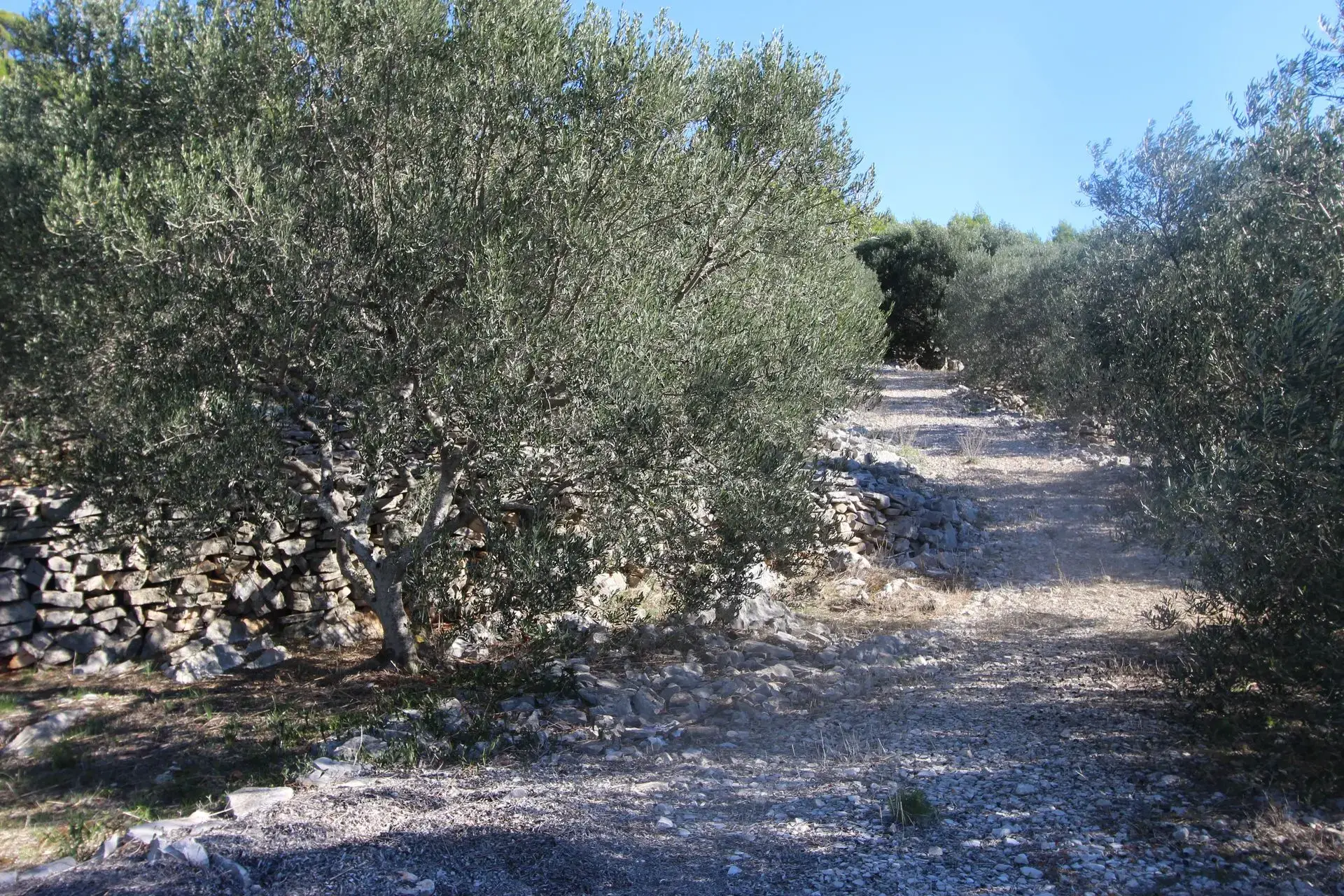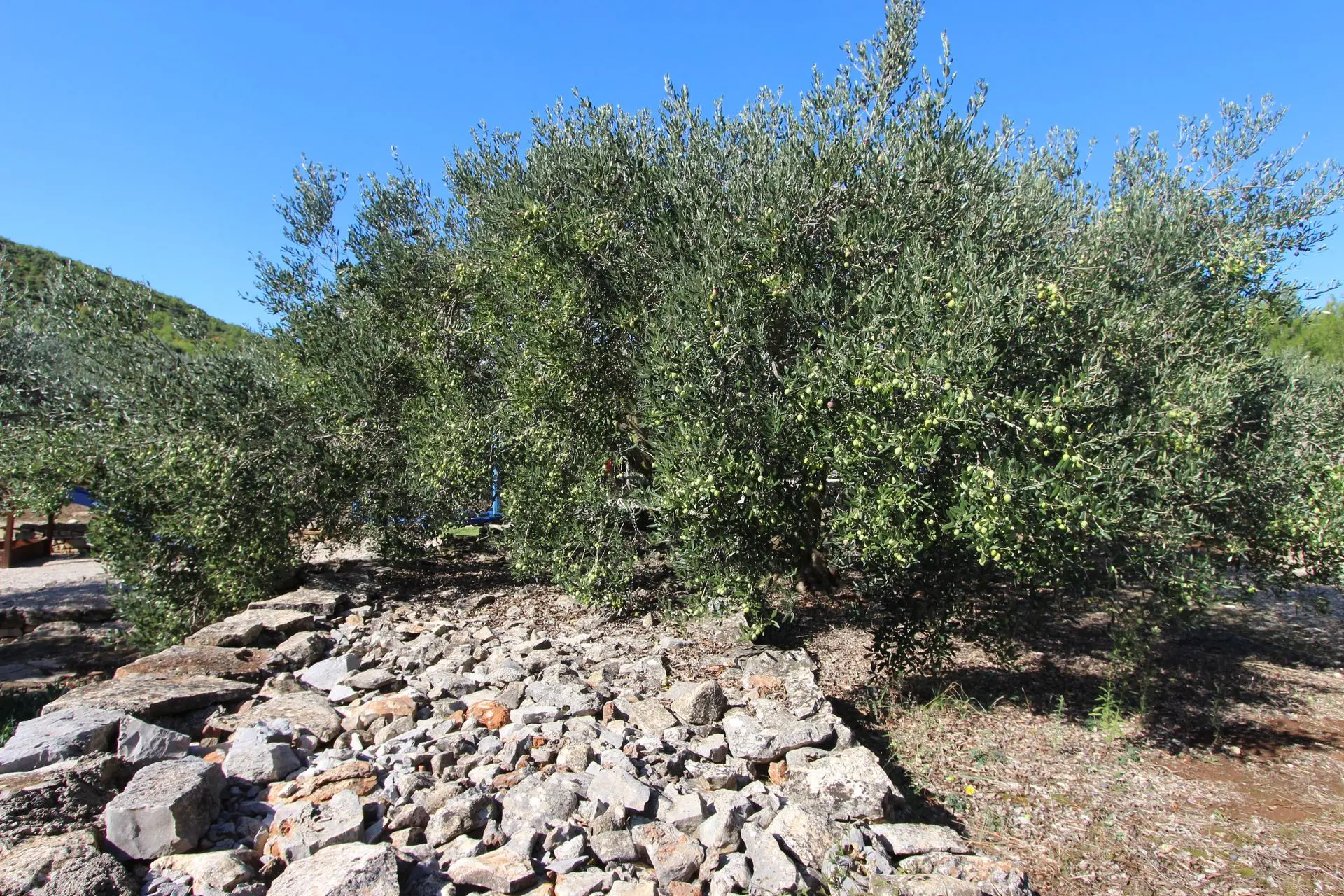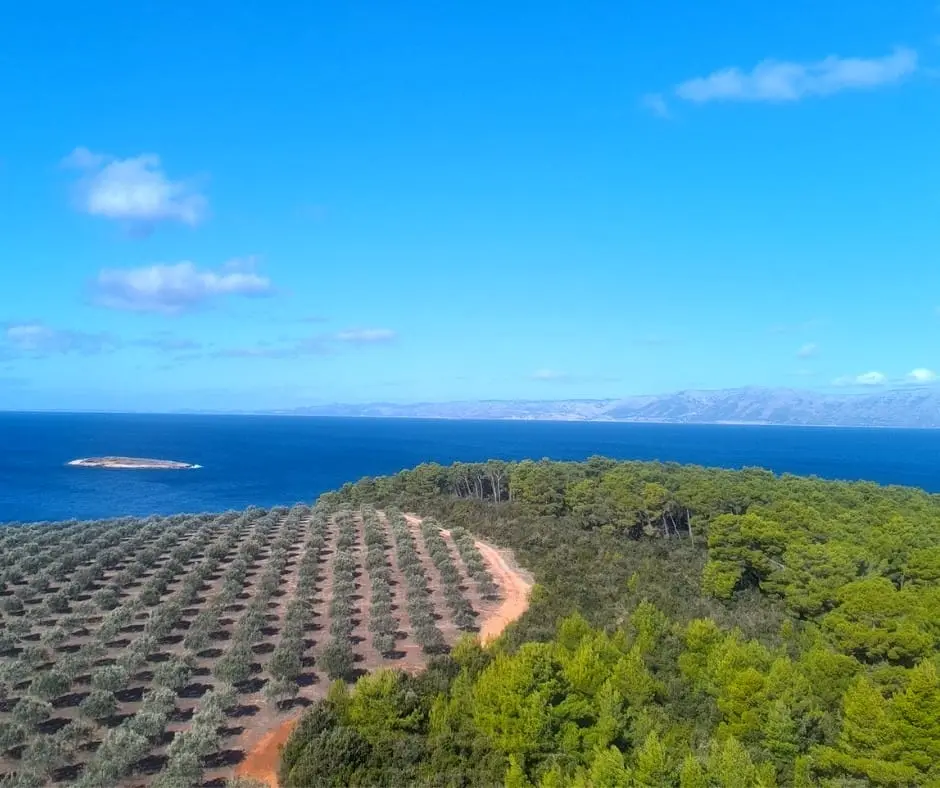The Olive Tree – More Than a Tree
The olive is more than a tree; it is a silent witness of millennia, its roots bound to stone, its branches reaching to the sky, and its fruit connected to humankind.
In its trunk are written the stories of peasants, and in each drop of oil – the memory of ancient times when it fed families, healed wounds, and lit the lamps in homes.
On this island, where stone and sea merge into a landscape of almost mythical beauty, the olive has become a symbol of perseverance and vitality, a precious “green gold” that connects Korčula to the Mediterranean and to the world.
From Rome to the Middle Ages
Archaeological finds testify to the existence of Roman country estates – villae rusticae – in nearly every settlement of Korčula. From these estates, oil was shipped to Split, Dubrovnik, and, through wider trade networks, to Italy. In those times, olive oil was not just food – it was currency, energy, and sanctity.
In the Middle Ages, olive groves were carefully cultivated by the Benedictines, who passed on their knowledge through their monasteries. When Korčula became part of the Republic of Dubrovnik, oil gained even greater importance as an export product. It was stored in stone cellars and oil mills, used for cooking, lighting, medicine, and church rites.

The Korčula Statute – Olive in the Law
The greatest legacy is found in the Statute of Korčula from 1214 – one of the oldest legal documents in this part of Europe. It granted the olive tree protection almost equal to that of human life and property. Felling a tree carried strict penalties; damage had to be compensated by planting new ones, and oil theft was considered a serious crime. Neglecting an olive grove could mean losing one’s land.
In the 13th century, the olive was thus legally and symbolically the very heart of the economy and community survival.
Dry Stone Walls – Architecture of Stone and Life
As early as the Bronze and Iron Ages, in the era of hillforts like Kopila near Blato, people stacked rough stone blocks without mortar, raising the first defensive structures and terraces. From that practice arose the dry stone wall – an architectural gesture of hand and stone that shaped the island for centuries.
Dry stone walls were not only boundaries. They protected the soil from erosion, preserved moisture, and created space where the olive could thrive. The Greeks and Romans adopted and refined this technique, enclosing olive groves and vineyards. From the 15th century onward, Korčula took on its familiar appearance: a mosaic of terraces and stone borders – both an agricultural system and a landscape art form.
Vitruvius’ ancient principle that architecture must embody three qualities – beauty, strength, and utility – found its purest expression here. The walls are beautiful because they draw the rhythm of the landscape; strong because they withstand centuries of wind and rain; and useful because they preserve the land and feed families. They are the philosophy of island life, translated into stone.

Development Through the Centuries
From the 16th to the 18th centuries, despite pirate attacks and wars, olive growing endured, often providing more stable income than wine. Under Venetian rule, additional regulations ensured the protection of olive groves, shaping the landscapes we still recognize today.
With the arrival of Austro-Hungary in the 19th century, olive cultivation flourished once again. Modernized agriculture and growing trade routes enabled Korčula’s oil, shipped in wooden barrels, to reach Split, Dubrovnik, Trieste, and Vienna. The island thus entered the European map of “green gold.”

The Twentieth Century – Between Growth and Decline
Industrialization, emigration, and depopulation in the 20th century caused periods of stagnation, yet olive harvests remained a social ritual – a time for families to gather, sing, and work together. The annual blessing of oil on Candlemas Day reminded everyone of the unbreakable bond between the olive tree and human life.

A Modern Renaissance and Today’s Authorities
In the 1990s, a new wave of restoration began. Modern oil mills introduced cold-pressing and strict quality standards, while indigenous varieties such as Lastovka and Drobnica produced oils that went on to win international awards.
The crowning recognition came with the PDO designation of origin for “Korčula Olive Oil”, confirming its unique authenticity and value.
Today, the story continues through numerous family farms across the island – from Vela Luka to Lumbarda – who restore ancient groves and bottle oils that conquer world competitions. They are heirs of centuries-old tradition, but also pioneers of the future. Their labels carry the story of the island across the globe, proving that Korčula’s olive is not only a legacy of the past, but also a vital and innovative industry of today.

A Drop that Connects Past and Future
On Korčula, the olive remains an eternal witness and guide – from the provisions of the medieval Statute, through the hands of farmers, the dry stone walls that guard the soil, the philosophy of architecture carved into stone, the drop of oil on a family’s table, to today’s award-winning bottles and eno-gastro experiences.
The olive and its oil are not merely history – they are living heritage. This story includes everyone who plants, harvests, produces, and preserves the best of the island – so that the world can taste it in a single drop.
Korčula’s green gold – a tradition, identity, and quality that has endured for millennia